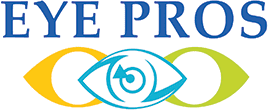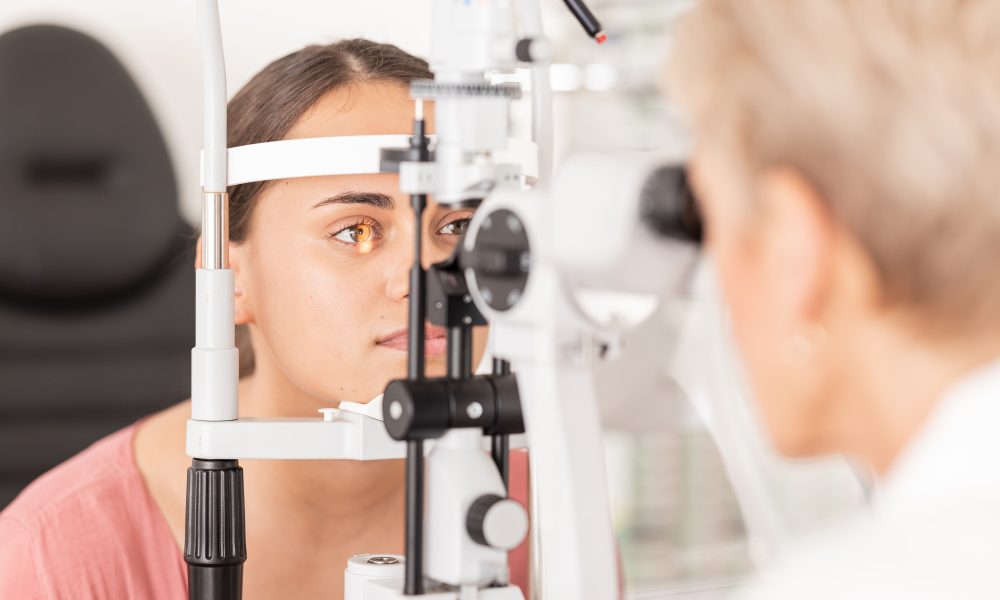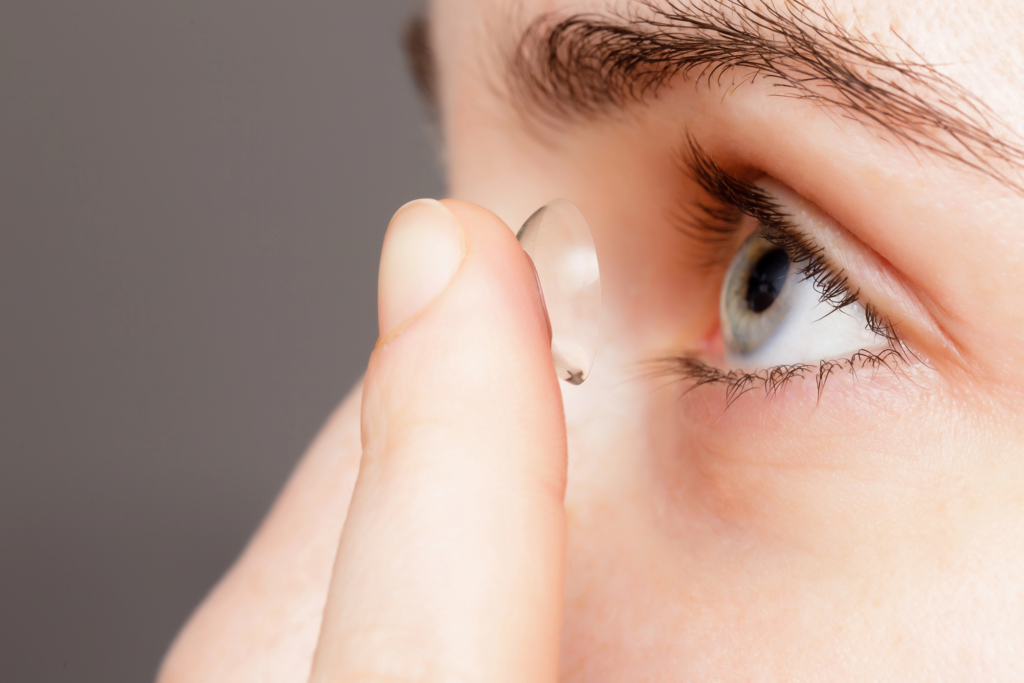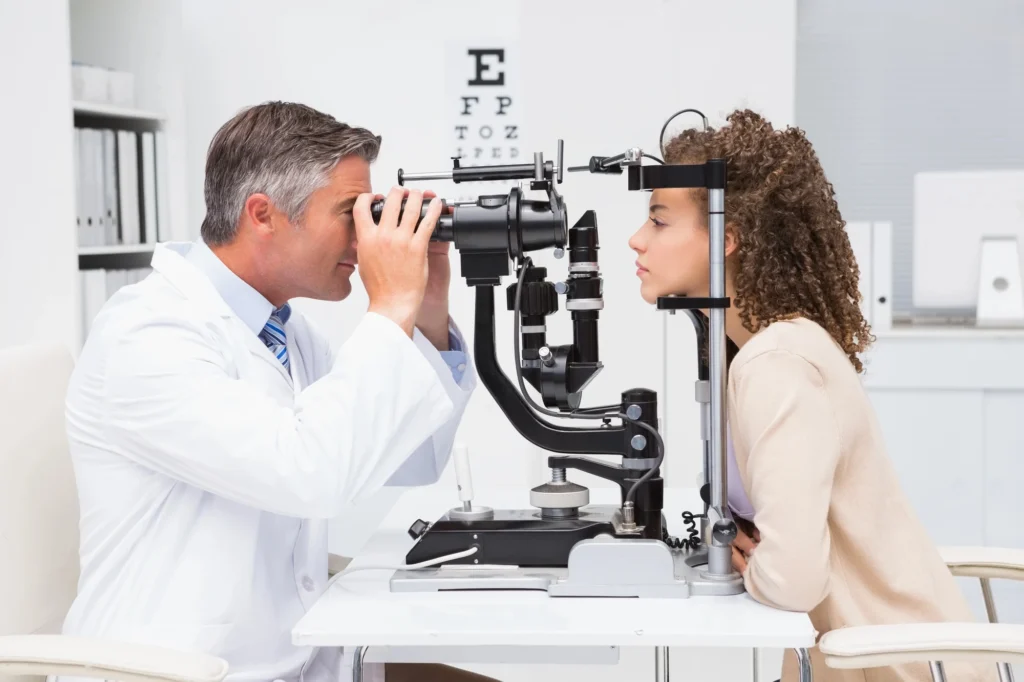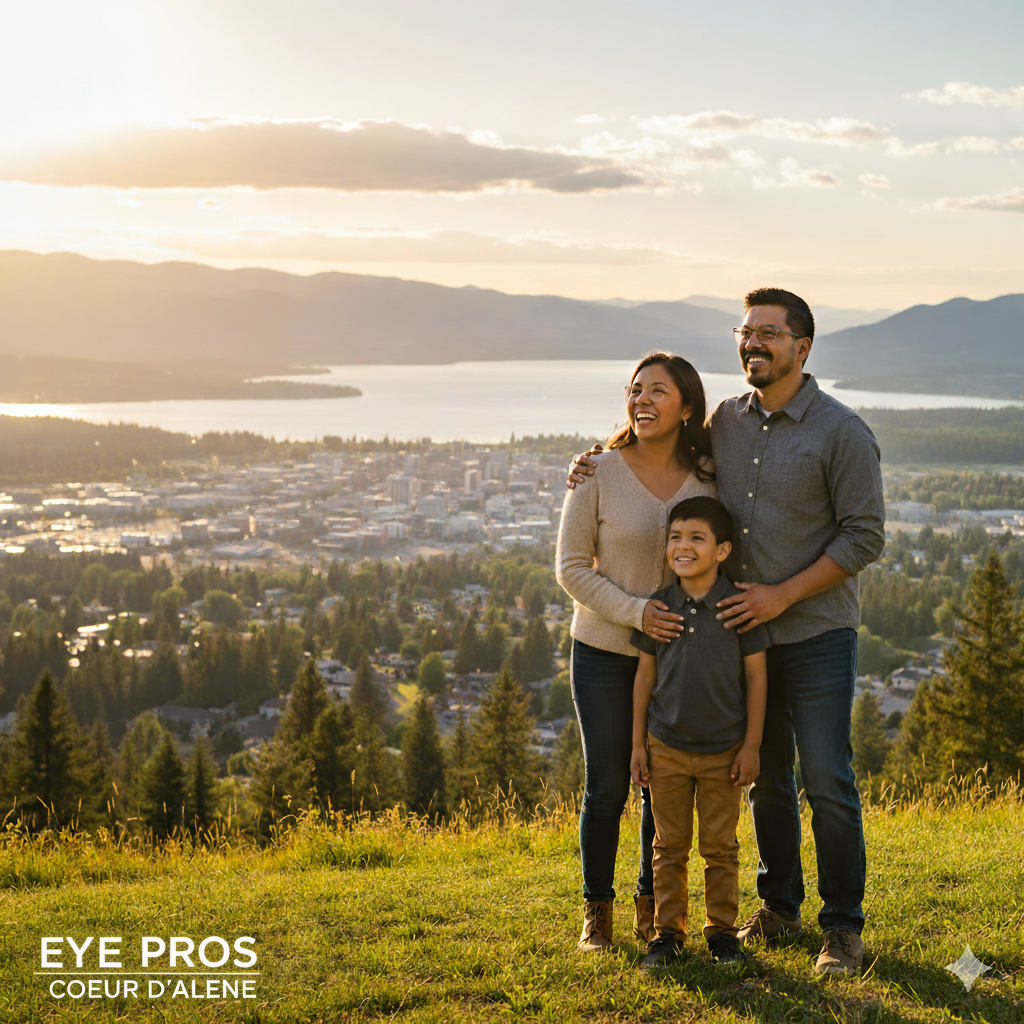As we grow and age, our bodies change—and so do our eyes. From childhood to senior years, vision needs evolve, and regular eye exams are the key to keeping your eyes healthy at every stage of life. But did you know that the way your eye doctor checks your eyes also changes depending on your age?
Whether it’s a child’s first eye exam, an adult dealing with digital eye strain, or a senior monitoring for cataracts, regular visits to the eye doctor ensure that you catch any issues early and protect your vision over time. In this article, we’ll explore how eye exams shift through different life stages, so you know what to expect as you and your eyes age.
Eye Exam for Kids
Children’s vision develops rapidly in the early years, and regular eye exams are essential for ensuring their eyesight is on the right track. Detecting vision problems early can prevent long-term issues that may affect learning and development. Most parents are unaware that kids can have vision problems even before they complain about blurry vision or other symptoms. That’s why an eye doctor plays a key role in catching problems that might go unnoticed.
Here’s why early eye exams are so important for children:
- Detecting common vision problems: Issues like lazy eye (amblyopia), crossed eyes (strabismus), or refractive errors (nearsightedness, farsightedness) are more easily treated when caught early.
- First eye exams: It’s recommended that children have their first comprehensive eye exam around the age of 3, or earlier if there are signs of vision issues. After that, regular exams are important to monitor their development.
- Visual learning: Since much of a child’s learning is visual, poor eyesight can lead to struggles in school. Kids may not realize their vision is blurry, which makes regular exams essential.
By bringing your child to an eye doctor for regular check-ups, you can ensure that any vision problems are detected and treated early, giving your child the best start in life.
Eye Exams for Teens and Young Adults
As kids grow into their teenage years and young adulthood, their vision can still change significantly, especially with the increased use of digital devices. This is the age group most prone to digital eye strain, a condition caused by long hours spent in front of screens for school, work, or entertainment. Regular visits to an eye doctor during this stage are crucial to monitor vision changes and catch any developing issues early.
Here’s why eye exams are important for teens and young adults:
- Screen time and digital eye strain: With so much time spent on phones, tablets, and computers, teens and young adults are more likely to experience digital eye strain. Symptoms include headaches, blurry vision, and dry eyes. An eye doctor can recommend strategies to reduce these symptoms, such as blue light filtering glasses or proper screen breaks.
- Changes in vision: For many young adults, vision problems like nearsightedness or farsightedness can become more apparent during these years. Teens may also need glasses or contact lenses to correct vision for driving, reading, or schoolwork.
- Sports and eye protection: For active teens, eye exams can also ensure that they have the right protective eyewear for sports. Whether it’s prescription goggles for swimming or protective lenses for contact sports, an eye doctor can guide teens on the best way to protect their eyes.
Scheduling regular eye exams ensures that vision problems are caught early and helps maintain good eye health during these pivotal years of growth and change.
Eye Exams for Adults (20s to 40s)
In adulthood, vision tends to stabilize, but that doesn’t mean you can skip regular eye exams. As life becomes busier with work and other responsibilities, it’s easy to overlook eye health. However, this is the age when screen time increases significantly, which can lead to digital eye strain and other vision-related issues. Routine visits to an eye doctor can help ensure your vision remains clear and healthy as you juggle work, family, and other activities.
Here’s why adults in their 20s to 40s should keep up with eye exams:
- Refractive errors: Many adults experience vision problems like nearsightedness, farsightedness, or astigmatism during this period. Corrective lenses, such as glasses or contact lenses, can help address these issues and maintain clear vision.
- Digital eye strain: With so much time spent on screens, many adults experience eye strain, headaches, and blurred vision. An eye doctor can suggest solutions like blue light lenses, proper screen settings, and taking breaks to reduce discomfort.
- Early detection of eye conditions: Regular eye exams can also catch early signs of more serious conditions, such as glaucoma, even if you aren’t noticing symptoms yet. Early detection is key to preventing vision loss.
- Contact lens care: For adults who wear contact lenses, eye exams ensure the lenses fit well and provide the correct vision correction. Poorly fitting lenses can lead to infections or discomfort, so it’s important to keep your prescription up to date.
By maintaining regular eye exams, adults can protect their vision and catch any issues before they become more serious.
Eye Exams for Middle-Aged Adults (40s to 60s)
Once you reach your 40s, you might notice that your vision isn’t what it used to be. This is the stage of life where presbyopia—the age-related difficulty of seeing things up close—starts to set in. Whether you’re struggling to read fine print or finding it harder to focus on near objects, regular visits to an eye doctor become essential. Changes in vision are normal as you age, but an eye exam can ensure you get the right corrective lenses and detect any early signs of eye conditions.
Here’s why eye exams in your 40s and 50s are so important:
- Presbyopia: This common condition makes reading or seeing things up close more difficult. Many people begin using reading glasses or multifocal lenses during this time, as recommended by their eye doctor.
- Increased risk of eye diseases: As you age, the risk of developing eye conditions like glaucoma, cataracts, and macular degeneration increases. These conditions can develop without noticeable symptoms, making routine eye exams essential for early detection.
- Vision adjustments: Even if you’ve never worn glasses before, middle age often brings changes that require vision correction. You may need glasses for reading, driving, or working at a computer. An eye doctor will assess whether you need updated prescriptions or different types of lenses.
- Preventive eye care: Beyond correcting vision, an eye exam can catch other health issues that may manifest through your eyes, such as diabetes or high blood pressure.
If you’re in your 40s or 50s, now is the time to be more vigilant about your vision. Regular eye exams can help you adjust to changes in your vision and protect your eye health as you age.
Eye Exams for Seniors
As you move into your senior years, regular eye exams become more important than ever. Aging brings a higher risk of developing serious eye conditions such as glaucoma, cataracts, and macular degeneration, which can severely impact your vision if not detected and treated early. Fortunately, routine visits to your eye doctor can help you manage these conditions and maintain the best possible vision as you age.
Here’s why eye exams are crucial for seniors:
- Cataracts: A common condition in seniors, cataracts cause clouding of the lens, leading to blurry vision. Regular eye exams can catch cataracts early, and treatment options like surgery can restore clear vision.
- Glaucoma: Often called the “silent thief of sight,” glaucoma develops without noticeable symptoms until significant vision loss occurs. An eye doctor can detect early signs of increased eye pressure and recommend treatments to slow or prevent further damage.
- Macular degeneration: This age-related condition affects central vision and can make tasks like reading and recognizing faces difficult. Early detection through routine eye exams can help manage macular degeneration with the right treatments.
- Prescription updates: As you age, your vision may continue to change. Your eye doctor will monitor your eyesight and update your prescription for glasses or contact lenses to ensure you’re seeing as clearly as possible.
- Comprehensive health check: Eye exams for seniors don’t just focus on vision—they can also reveal broader health issues, such as diabetes or high blood pressure, which may show early signs in the eyes.
For seniors, scheduling regular eye exams every year is essential for preserving vision and catching any age-related conditions before they progress. Your eye doctor can provide personalized care to help you maintain a high quality of life through healthy vision.
Preventive Eye Care at Every Age
No matter your age, preventive eye care is key to maintaining healthy vision throughout your life. Regular eye exams are essential, but there are other simple habits you can adopt to protect your eyes from common issues and age-related conditions. Taking care of your eyes early on can help prevent serious problems later in life and ensure your vision remains sharp.
Here’s how to practice preventative eye care at any age:
- Healthy diet: Eating foods rich in vitamins and antioxidants, such as leafy greens, fish high in omega-3 fatty acids, and colorful fruits, can help protect your eyes from age-related conditions like macular degeneration and cataracts.
- Wear sunglasses: Protect your eyes from harmful UV rays by wearing sunglasses that block 100% of UVA and UVB radiation. This helps prevent long-term damage that could lead to cataracts or macular degeneration.
- Limit screen time: To avoid digital eye strain, follow the 20-20-20 rule: every 20 minutes, take a 20-second break and look at something 20 feet away. This helps reduce strain and keeps your eyes comfortable.
- Stay hydrated: Dry eyes are a common issue that can worsen with age. Staying hydrated by drinking plenty of water and using moisturizing eye drops can help keep your eyes moist and comfortable.
- Quit smoking: Smoking increases the risk of developing eye conditions such as cataracts and macular degeneration. Quitting smoking not only benefits your overall health but also protects your eyes.
- Regular eye exams: No matter your age, seeing an eye doctor regularly is crucial. Eye exams help catch vision problems early, from childhood through senior years, and your eye doctor can recommend lifestyle adjustments or treatments to maintain your eye health.
By following these preventative measures and scheduling routine visits with your eye doctor, you can enjoy healthy vision at every stage of life.
FAQs
How often should I get an eye exam?
For adults, it’s recommended to get an eye exam at least once every two years if you have no vision problems. However, if you wear glasses or contact lenses, or are at higher risk for eye conditions, annual exams with an eye doctor are important. Children and seniors should also have more frequent exams—kids should start with their first exam by age 3, while seniors should have yearly check-ups to monitor for age-related conditions.
What vision problems are common in kids?
Children can experience several vision issues, including nearsightedness (myopia), farsightedness (hyperopia), astigmatism, and amblyopia (lazy eye). Early detection through regular eye exams is key to preventing long-term issues and supporting a child’s visual development.
What is presbyopia and how is it treated?
Presbyopia is a natural age-related condition that affects the eye’s ability to focus on close objects, making tasks like reading more difficult. It typically starts around age 40 and can be treated with reading glasses, bifocal or progressive lenses, or contact lenses, as recommended by your eye doctor.
How do eye exams change after 40?
After 40, eye exams begin to focus more on detecting age-related vision changes, like presbyopia, and monitoring for eye conditions such as glaucoma, cataracts, and macular degeneration. Regular exams become crucial for early detection and treatment, ensuring that any developing issues are managed before they affect vision significantly.
What are the most common age-related eye conditions?
The most common age-related eye conditions include glaucoma, cataracts, macular degeneration, and presbyopia. These conditions can lead to vision loss if not managed properly, which is why routine visits to an eye doctor become essential as you age.
Why is eye health important in seniors?
Maintaining good eye health in seniors is vital to preserving independence and quality of life. Many age-related eye conditions, such as cataracts and macular degeneration, can lead to vision loss if left untreated. Regular eye exams can catch these issues early and help prevent serious vision impairment.
How to test a 3-year old’s vision?
An eye doctor will typically use child-friendly methods, such as picture charts, to evaluate a 3-year-old’s vision. They may also check for eye alignment (to detect conditions like strabismus) and perform tests to evaluate visual acuity and overall eye health, ensuring that any potential issues are caught early.
Eye health changes throughout life, and regular eye exams are essential for detecting and addressing vision issues at every age. From kids learning in the classroom to seniors preserving their independence, a routine visit to the eye doctor helps ensure clear vision and early detection of potential problems. By staying proactive about your eye health, you can protect your vision and enjoy life with healthy eyes no matter your age.
If it’s been a while since your last eye exam, now is the perfect time to schedule one! At The Eye Pros, our experienced eye doctors are here to provide personalized care for every stage of life, from childhood to senior years. Book your appointment today and keep your vision sharp and healthy at any age.
